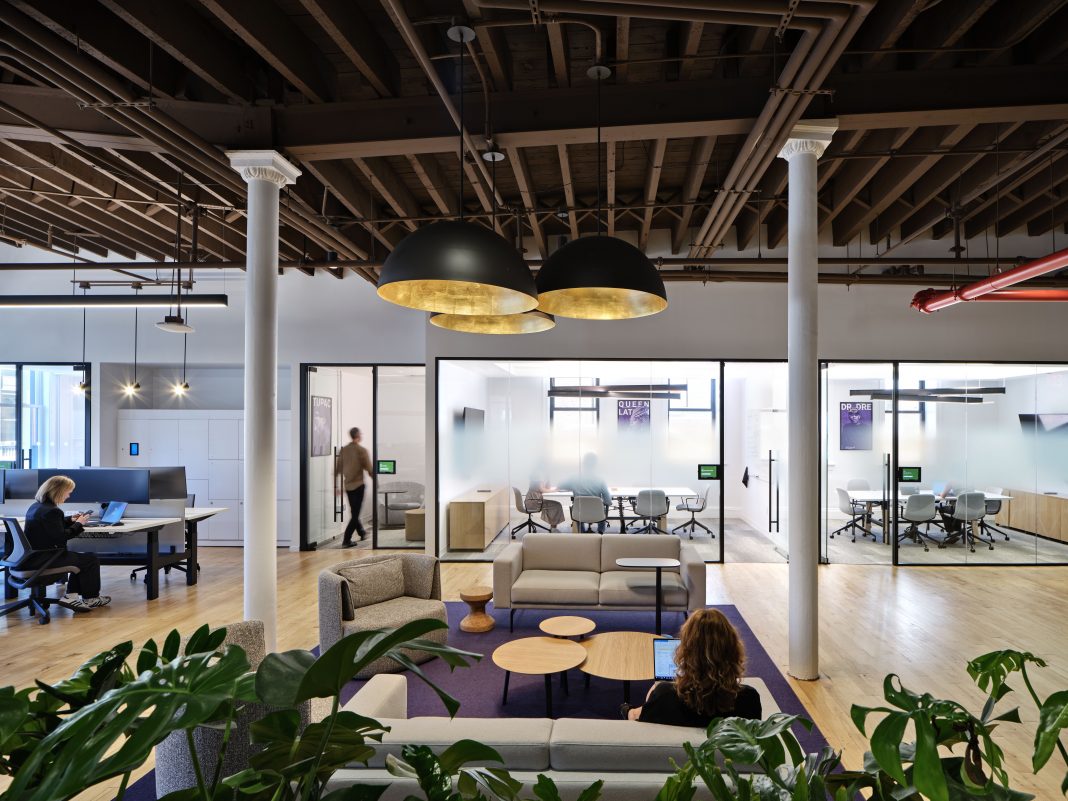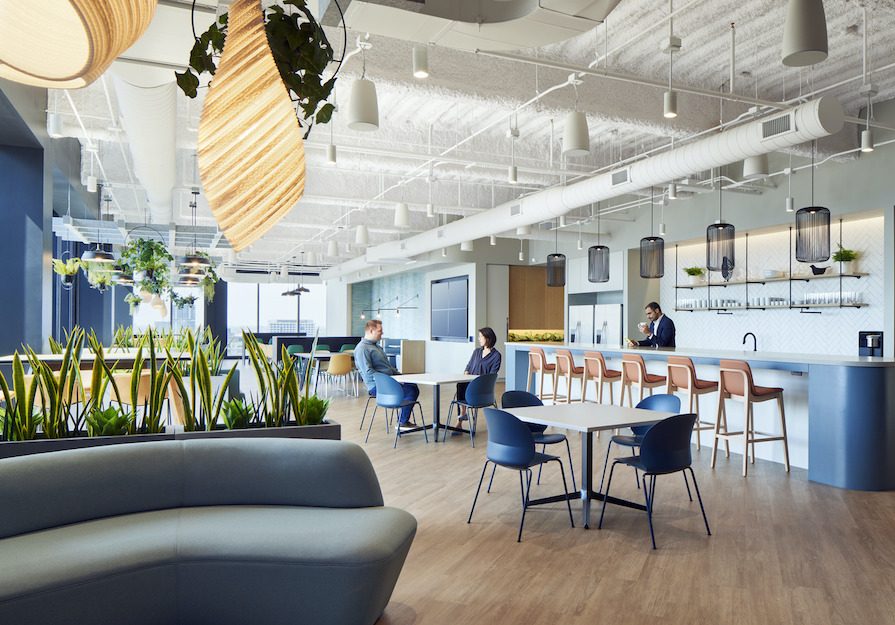Unispace’s Albert DePlazaola suggests transforming offices into iPhone-like spaces to cater to today’s workforce expectations.
Over the last four years, there has been a significant evolution of the workforce and the culture of work that’s made the traditional office model unfulfilling for many employees. In the past, providing basics such as working WiFi and free coffee were enough, but today’s employees expect more from the workplace. Having enjoyed the conveniences and comforts of working from home, they want to return to offices that are helpful and frictionless, predicating performance, comfort, and style in a way that mirrors and expands upon the experience of remote work.
In short, they [employees] want to work in an office resembling something like… an iPhone.
iPhones remain one of the most popular mobile devices in the world. Why? They have a great user interface, personalized features, provide on-demand content, and symbolize a broader aspiration for success. What drives consumption for iPhones is desirability and design—each reinforcing the other over time.
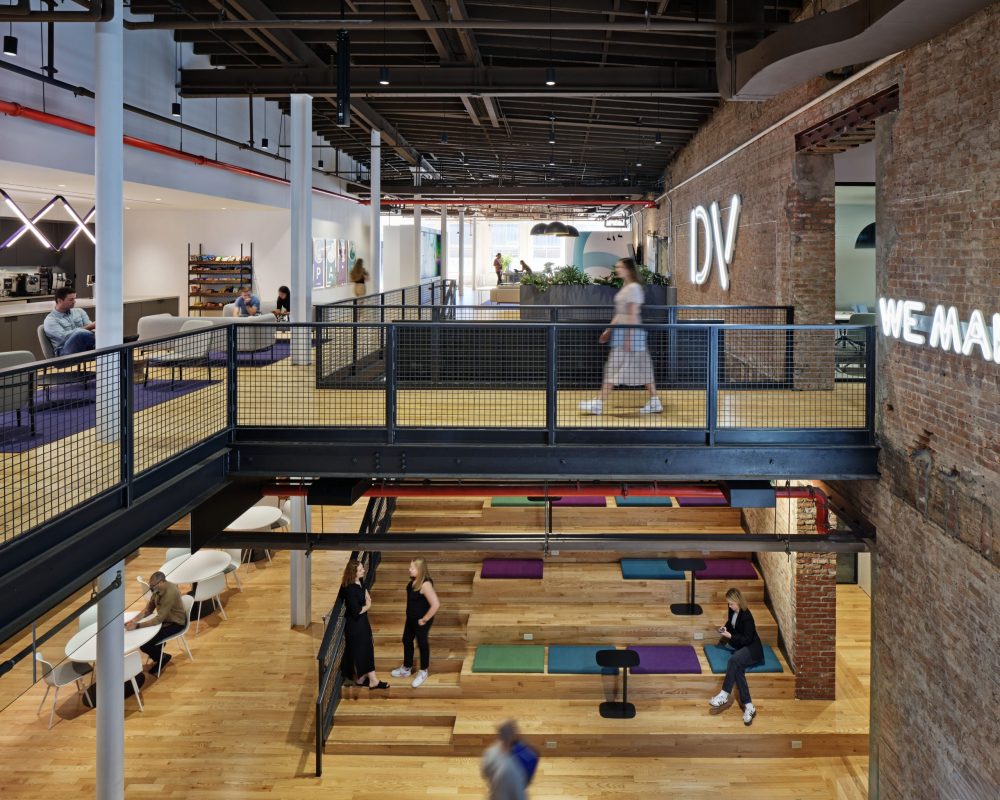
To be useful and relevant, workspaces must do the same. Through design, they should be intentional in their purpose. Employees must see a material benefit from coming into the office, far beyond satisfying a management mandate or occupancy protocol. The environment should allow them to be more productive than they would be at home. It should promise enhanced performance of purpose-built spaces where every employee—no matter their individual workstyle—can do their best work.
So how can organizations reimagine their offices into these frictionless, transformational environments? There are a few steps companies must take to create successful in-person work experiences and evolve their workplaces along with the times.
Incorporating integrated technology
Unispace’s 2023 Global Workplace Insights report, Returning for Good, revealed that employees consider a strong internet connection to be the single most important factor for both returning to the office and being productive. Simple requirement, simple solution, right? Not quite.
The most prevalent hybrid work model is 3/2 (3 days in the office, 2 remote), with most employees coming in Tuesday through Thursday. Most pre-COVID workplaces were planned using 5-day average occupancy numbers to determine how much space was needed, never imagining that a disproportionate amount of employees would only come in Tuesday through Thursday. As a result, when hybrid employees do go in, they experience a workplace that feels like “rush hour.” The internet goes down, conference rooms are unavailable, the café area is overcrowded, and services are strained.
If the workplace was a car engine, it would redline three days a week and remain idle for two.
When employees are coming into the office after an hour commute and can’t connect to WiFi, it’s no surprise when they wonder, “why am I here?”
If Maslow applied his famous hierarchy to the workplace, a strong internet connection would be a basic psychological need. Workplaces that want to enable self-actualization need to offer more.
With many client-facing and internal meetings still occurring remotely, it’s critical that both the private and open spaces in an office are outfitted with seamless video and audio enablement, room reservation apps, and digital collaboration tools. Toss all the unnecessary bells and whistles from the conference room and make it easy on employees to join meetings without repeatedly asking, “can you hear me?”
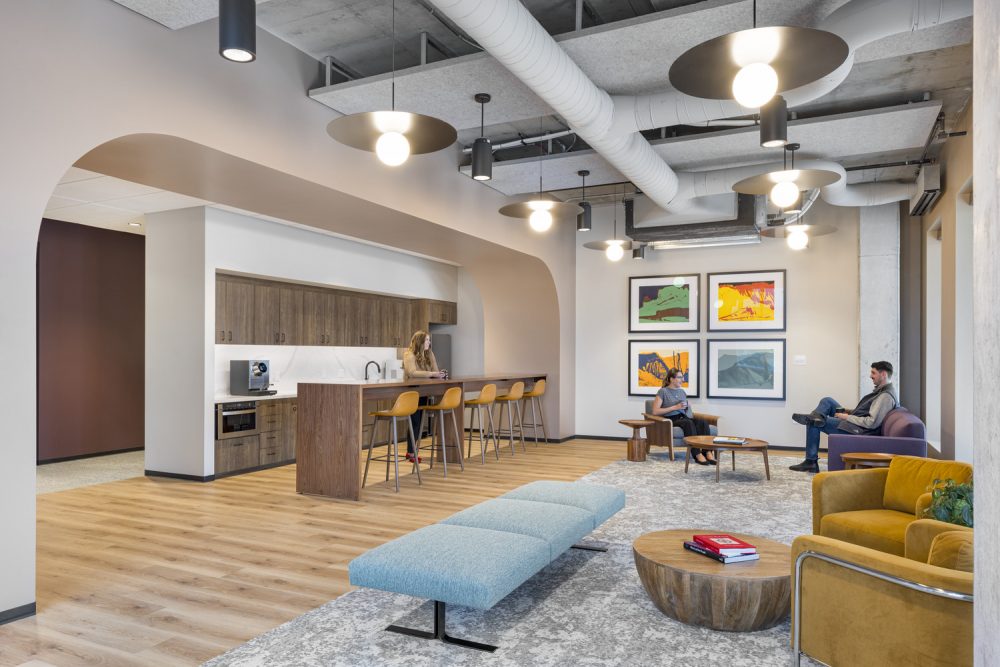
Organizations should also be paying attention to emerging workplace technologies that are set to revolutionize the employee experience, such as:
- VR products and platforms: VR technology will increasingly be used to bring together employees and stakeholders around the world for meetings and events that feel more “real” than our current virtual meeting platforms. Companies should think about creating spaces within their offices that can accommodate meetings in the metaverse, such as dark rooms equipped with headset and laptop syncing capabilities where people can move around.
- Personalization through advanced software and data analysis: Using data collection tools, employers can track how their employees work throughout the day and provide suggestions. For example, they can leverage technology to record a collaborative session, measure employees’ performances in that meeting against algorithmic “collaborative best practices,” and use AI to send them scorecards with ways they can improve.
The single biggest challenge to technological integration is the critical mass of adoption. If half of a company’s employees regularly use a new tech that involves training and support that the other half has never tried, it can cause friction and disillusionment. Nobody reads the instructional manual for an iPhone—its hardware and software enable seamless user adoption. So too should the workspace and its technology.
Crafting the right hybrid solutions
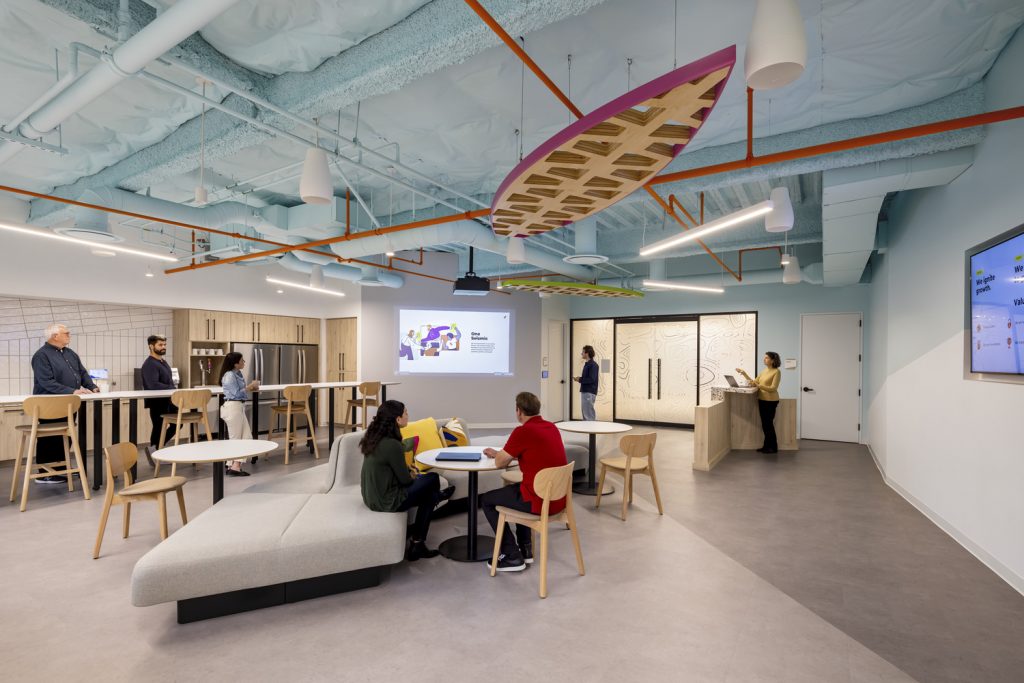
Technology alone will not solve return-to-office (RTO) woes—smart policies to normalize average occupancy rates over the course of the week and eliminate the redlines are needed. To improve and optimize the office experience for hybrid employees, companies should provide guidelines around RTO expectations, but let managers and teams determine what works best for them. This can be achieved by:
- Switching up in-office days: Incentivize teams to come into the office on non-peak days with food and drinks and a promise that leadership will be present. If leaders come into the workplace, employees will follow.
- Catering to all: Data from Returning for Good shows that having an assigned desk would make many workers more likely to come into the office, and that quiet areas for focus and respite are needed for employees to do their best work. Organizations must understand that some employees cannot do focus work at home, and that introverts and neurodiverse employees never liked the open office. Workers shouldn’t be asked to come back to an environment with a design that amplifies feelings of frustration and anxiety.
- Fostering a responsive workspace: Teaming areas enabling collaboration and innovation, flexible meeting spaces such as townhall entertaining areas that can split into smaller rooms, and a mix of “me” (individual), “we” (small group), and “us” (large group) spaces enable all employees to feel supported when in the office. A misconception is that “flexible spaces” are expensive and require significant architectural intervention and investment. Not necessarily. Space can be repurposed simply by moving furniture or by establishing a new etiquette for the area. For example, libraries can transform into teaming spaces by implementing a new behavioral protocol. Rely on change management versus costly architectural intervention.
Optimizing space
To meet the needs of today’s employees, organizations must create intentional, visionary spaces that enhance experience and productivity. Like an iPhone, each design decision should support a desired user journey. What does that look like in practice?
- Brand experiences starting at the parking lot: Intentional workplace design means considering the full spectrum of sensory experiences a person can have from the moment they leave their car or approach the building. Companies should think about how their brand is expressed both psychologically and physically throughout the entry experience. Thoughtful wayfinding, concierge services, and interactive technology can reduce friction. Even elevators and hallways can be catalysts for a desired experience.
- Adaptive zones instead of neighborhoods: The predominate organizing design principle for office space is the “neighborhoods” model, whereby teams or groups are allocated work areas with workstations, conference rooms, and phone booths. This may have worked when employees came into the office every day, but in the era of hybrid work, neighborhoods underperform and should be replaced with activity zones. These include Community, Innovation, and Problem-Solving zones, and each should employ universal design principals to enable peak performance. For example, circadian lighting throughout; design for predictability; elimination of all or most volatile organic compounds (VOCs); and textures and sounds that differentiate zones. Each zone should also have its own unique design elements:
- Problem-Solving zones: Spaces and elements proportioned to human scale, mobile furniture, high back seating, low ceilings, soundscaping, and no reflective surfaces to eliminate distractions.
- Community zones: Higher ceilings, maximized seating options, a balance of technology and natural elements, and increased circulation space to foster comradery.
- Innovation zones: Clean air micro zones, focal points for different teaming areas, and avoiding rigid 90-degree angles to create a sense of fluidity throughout the space and allow ideas to circulate.
When employees come into the office, they expect their needs to be catered to. If they’re encountering friction due to outdated technology, an ineffective hybrid model, or unproductive spaces, they’ll likely look for a job elsewhere. Organizations looking to design their future workplaces should consider the strategies outlined here to create transformative, iPhone-like spaces that their people will want to—not have to—come into.

